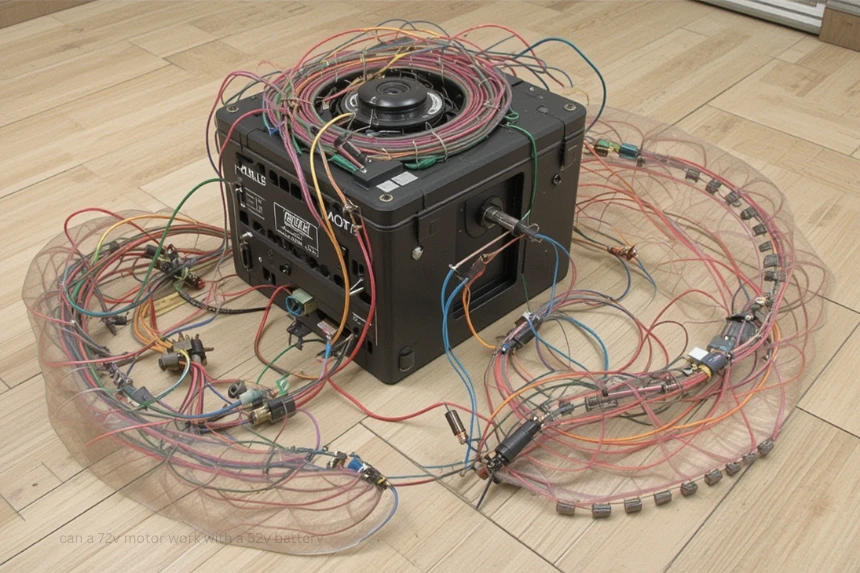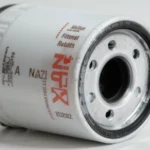Introduction
Electric motors are integral components in various applications, from e-bikes to electric scooters, and understanding their power requirements is crucial for safe and efficient operation. One common question among enthusiasts is, “Can a 72V motor work with a 52V battery?” This inquiry stems from the desire to optimize performance while ensuring longevity and safety. In this article, we will explore the technical aspects of using a 72V motor with a 52V battery, including potential risks, performance considerations, and practical solutions.
Understanding Voltage Ratings in Electric Motors
Before addressing whether a 72V motor can work with a 52V battery, it’s essential to grasp what voltage ratings signify. The voltage rating indicates the optimal operating voltage range within which the motor performs efficiently and safely. A 72V motor is designed to operate at or near 72 volts, ideally supplied by a compatible battery pack.
When a motor is rated for 72V, it generally means that its internal components, such as windings and magnets, are tailored to handle the electrical current and magnetic fields generated at this voltage. While higher voltage runs the danger of destroying the motor, much lower voltage may result in underperformance.
Can a 72V Motor Work with a 52V Battery?
Short answer: Not ideally. While it is possible in some cases to operate a 72V motor with a 52V battery, it comes with certain caveats and risks.
Operating at Reduced Voltage
If you connect a 72V motor directly to a 52V battery, the motor will attempt to run at a lower voltage—roughly 72V down to 52V, which is about 72% of its rated voltage. This can result in:
Reduced Power Output: The motor may not reach its full torque or speed capabilities because the magnetic fields generated are weaker.
Lower Speed: The maximum RPM (rotations per minute) will significantly decrease since the motor’s speed correlates proportionally to the supply voltage.
Possible Starting Issues: The motor may struggle to start or run smoothly, especially under load, because lower voltage results in insufficient magnetic force.
Impact on Motor Lifespan
Operating below the rated voltage isn’t necessarily damaging; however, it can cause the motor to work harder to produce the same torque, potentially increasing heat and wear over time. Conversely, attempting to run the motor at or above its rated voltage can cause overheating and premature failure.
Controller Compatibility
Another critical factor is the motor controller. Many controllers are rated for specific voltage ranges; using a 52V power source with a controller designed for 72V might lead to improper functioning or damage. Check to see if the controller can operate well at the lower voltage.
Practical Solutions for Using a 72V Motor with a 52V Battery
If your goal is to run a 72V motor with a 52V battery, here are some practical approaches:
1. Use a Voltage Boosting Controller
Some motor controllers are capable of accepting input voltages below the motor’s rated voltage and can regulate power accordingly. Using a step-up (boost) controller allows you to effectively increase the voltage supplied to the motor, within safe limits, to achieve desired performance.
2. Upgrade the Battery Pack
The most straightforward way to ensure optimal performance is to upgrade your battery pack to match the motor’s voltage rating. For a 72V motor, a 72V (or 74.4V with a fully charged 20S lithium-ion pack) battery ensures proper operation.
3. Serial Connection of Batteries
If you have multiple batteries, connecting them in series to reach the desired 72V might be feasible. This, however, requires careful balancing and appropriate charging practices to prevent damage.
4. Accept Reduced Performance
If upgrading the battery isn’t feasible, you can run the motor at 52V but, as mentioned, expect reduced power, speed, and efficiency. Make sure your expectations align with what the lower voltage can reliably support.
Risks and Considerations
Attempting to operate a 72V motor directly from a 52V battery without proper modifications can lead to:
Overheating: Due to insufficient cooling or overloading.
Premature Motor Failure: From inadequate magnetic force and increased wear.
Damage to Controller: If not rated for the voltage range.
Safety Risks: Including electrical fires or component failures.
Always verify the manufacturer’s specifications and consult experts or technical manuals before attempting such modifications.
Conclusion
Can a 72V motor work with a 52V battery? Understanding the relationship between voltage, performance, and safety is the answer. While it’s technically possible to operate a 72V motor with a 52V power source, it results in reduced efficiency, lower speed, and potential risks to the motor and controller. For optimal performance and longevity, matching the motor’s rated voltage with an appropriately rated battery pack is advisable.
If upgrading the battery isn’t an option, consider using specialized controllers or systems designed for variable input voltages. Always prioritize safety and adhere to manufacturer guidelines to ensure your electric vehicle or project runs smoothly and reliably.



